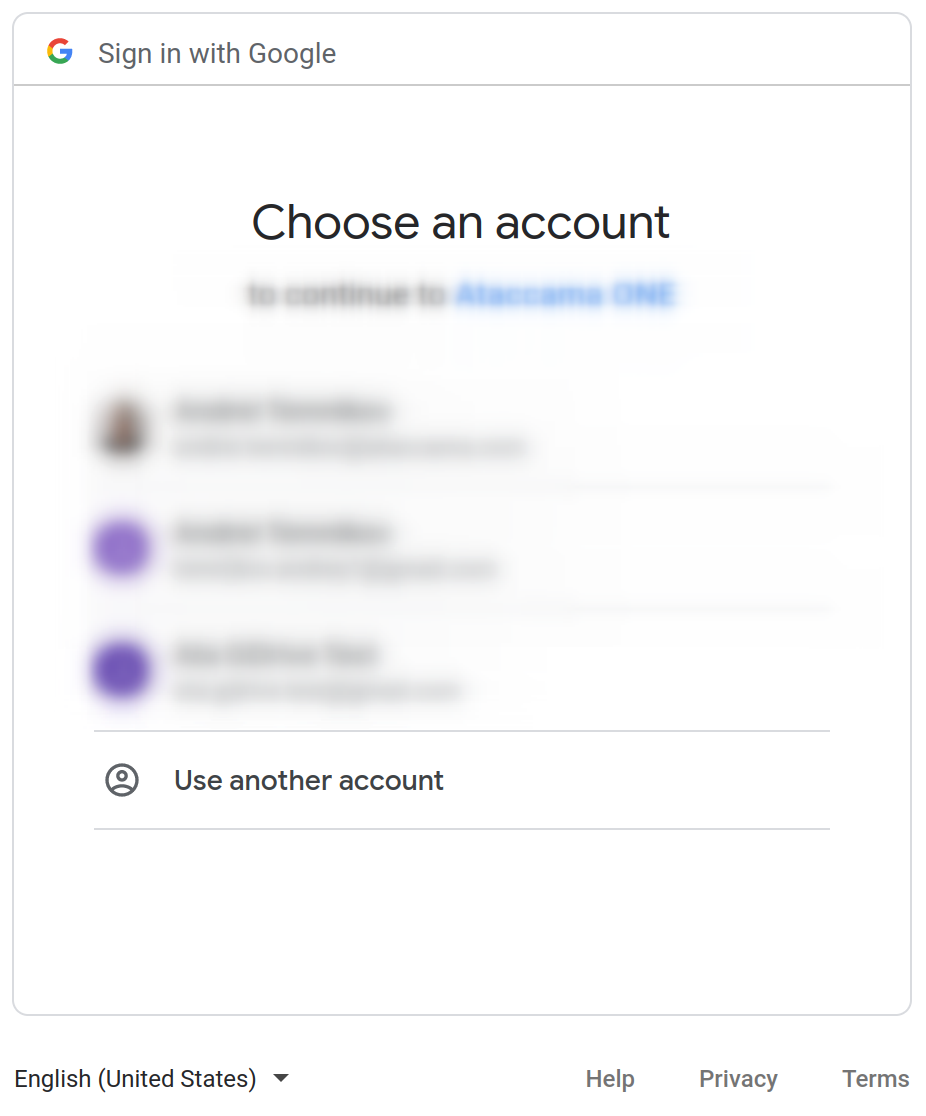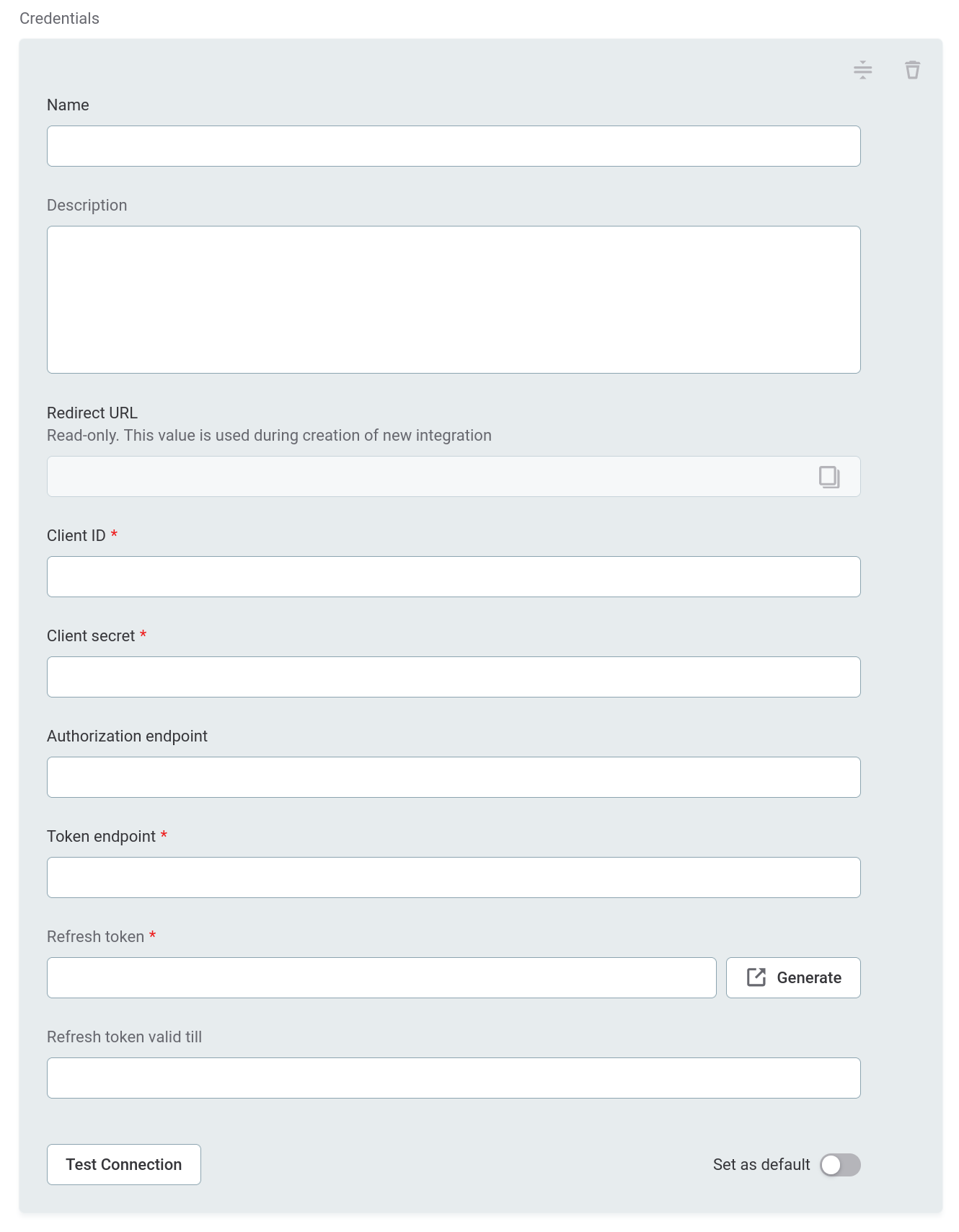Google Drive Connection
Prerequisites
The Google Drive connector requires a Google Cloud application to use the OAuth 2.0 authentication. The application sets up only once to allow connecting for multiple users and multiple Google Drives.
If your Google Cloud application is not yet configured with the OAuth 2.0 authentication, see Google Cloud Application Configuration.
Create a source
To connect to Google Drive:
-
Navigate to Data Catalog > Sources.
-
Select Create.
-
Provide the following:
-
Name: The source name.
-
Description: A description of the source.
-
Deployment (Optional): Choose the deployment type.
You can add new values if needed. See Lists of Values. -
Stewardship: The source owner and roles. For more information, see Stewardship.
-
| Alternatively, add a connection to an existing data source. See Connect to a Source. |
Add a connection
-
Select Add Connection.
-
In Select connection type, choose File system > Google Drive.
-
Provide the following:
-
Name: A meaningful name for your connection. This is used to indicate the location of catalog items.
-
Description (Optional): A short description of the connection.
-
Dpe label (Optional): Assign the processing of a data source to a particular data processing engine (DPE) by entering the DPE label assigned to the engine. For more information, see DPM and DPE Configuration in DPM Admin Console.
-
-
In Additional settings, select Enable exporting and loading of data if you want to export data from this connection and use it in ONE Data or outside of ONE.
If you want to export data to this source, you also need to configure write credentials. See Connection credentials.
Consider the security and privacy risks of allowing the export of data to other locations.
Add credentials
Different sets of credentials can be used for different tasks. One set of credentials must be set as default for each connection.
To determine whether you need to configure more than a single set of credentials, see Connection credentials.
| Only the OAuth 2.0 authentication is supported. |
-
Select Add Credentials.
-
Provide the following:
-
Name (Optional): A name for this set of credentials.
-
Description (Optional): A description for this set of credentials.
-
Redirect URL: This field is predefined and read-only. This URL is required to receive the refresh token.
-
Client ID: The OAuth 2.0 consumer key associated with the Google Drive account.
-
Client secret: The consumer secret for the Google Drive account.
-
Authorization Endpoint: The OAuth 2.0 authorization endpoint of the Google Drive API. It is required only if you need to generate a new refresh token.
The default value is
accounts.google.com/o/oauth2/auth. -
Token Endpoint: The OAuth 2.0 token endpoint of the Google Drive API.
The default value is
oauth2.googleapis.com/token. -
Refresh Token: The OAuth 2.0 refresh token. Select Generate to create a new token.
This opens a Google Single Sign-On screen where you need to choose a Google account with which you want to connect to the data source.

Once you do this, the expiration date of the refresh token is updated in Refresh token valid till. This field is provided for informational purposes only. If you generate a new refresh token, a new expiration date is updated accordingly.
-
-
Set the credentials to be used as default (Set as default).
See also Connection credentials.

Test the connection
To test and verify whether the data source connection has been correctly configured, select Test Connection.
If the connection is successful, continue with the following step. Otherwise, verify that your configuration is correct and that the data source is running.
Save and publish
Once you have configured your connection, save and publish your changes. If you provided all the required information, the connection is now available for other users in the application.
In case your configuration is missing required fields, you can view a list of detected errors instead. Review your configuration and resolve the issues before continuing.
Next steps
You can now browse and profile assets from your Google Drive connection.
In Data Catalog > Sources, find and open the source you just configured. Switch to the Connections tab and select Document. Alternatively, opt for Import or Discover documentation flow.
Or, to import or profile only some assets, select Browse on the Connections tab. Choose the assets you want to analyze and then the appropriate profiling option.
Troubleshooting
-
If the connection fails, check the inputs carefully. Make sure that there are no spaces in the Client ID and Client Secret fields.
If this does not help, check the configuration of the Google Cloud Application provided for this Google Drive. Note that the URI of the running instance should be present in the list of the authorized redirect URIs. For details, refer to Google Cloud Application Configuration.
-
In case a refresh token has been issued but is lost (for example, the data source or connection was accidentally deleted or the refresh token field was overwritten), the generate token function (Generate option in Refresh token) can fail. This is because Google cannot return a refresh token as it has been issued already.
If this occurs, go to myaccount.google.com/u/0/permissions and remove the Google application permission.
Was this page useful?
